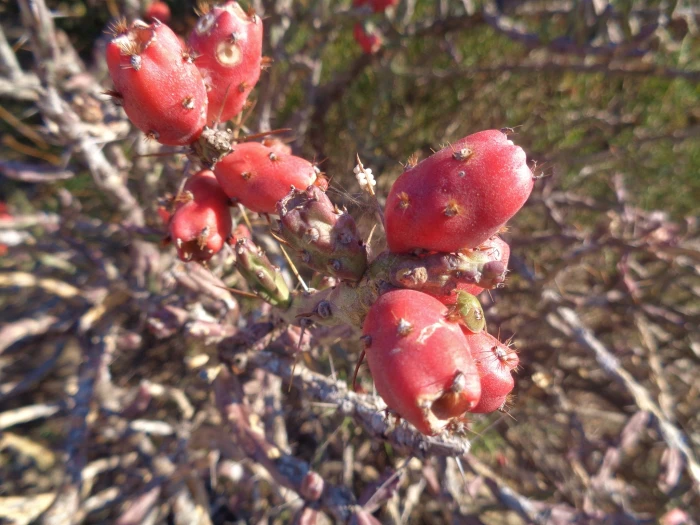Desert Christmas Cactus
(Cylindropuntia leptocaulis)
Desert Christmas Cactus (Cylindropuntia leptocaulis)
/
/

Luc Wyn
CC BY 4.0






















































Estimated Native Range
Climate Requirements for Worcester, Massachusetts
| This Plant | Your Site | Plant Suitability for Your Location | ||
|---|---|---|---|---|
| • Precipitation | 2" - 91" | 47" | Aquatic | Aquatic |
| • High Temp. | 65°F - 110°F | 83°F | Your summer temperatures are normal for this plant. | Excellent |
| • Low Temp. | 10°F - 58°F | 14°F | Your winter temperatures are normal for this plant | Excellent |
Summary
Desert Christmas Cactus is notable for its late afternoon blooming flowers, which are pale yellow or greenish yellow, sometimes with red tips, and its red berries that appear around December, giving the plant its common name. The berries are not only decorative but have historical use among indigenous peoples. In cultivation, it is valued for its drought tolerance and unique appearance, making it a suitable choice for xeriscaping, rock gardens, and as a container plant for dry, sunny locations. It requires full sun exposure and well-draining soil, with minimal water once established. While it is generally low-maintenance, it can be susceptible to root rot if overwatered and may require protection from frost in cooler climates.CC BY-SA 4.0
Plant Description
- Plant Type: Shrub, Succulent
- Height: 2-4 feet
- Width: 1-2 feet
- Growth Rate: Moderate
- Flower Color: White
- Flowering Season: Summer
- Leaf Retention: Evergreen
Growth Requirements
- Sun: Full Sun
- Water: Very Low
- Drainage: Fast
Common Uses
Bee Garden, Deer Resistant, Drought Tolerant, Low Maintenance, Rock Garden
Natural Habitat
Native to desert scrub and arid grasslands in the Southwestern United States and Mexico
Other Names
Common Names: Christmas Cactus , Desert Christmas Cholla , Pencil Cactus , Tasajillo , Christmas Cholla , Rat-Tail Cactus , Slender-Stem Cactus , Pencil Cactus , Pencil Cholla , Desert Christmas Cactus
Scientific Names: Cylindropuntia leptocaulis , Opuntia leptocaulis , Opuntia leptocaulis var. brittonii , Opuntia mortolensis , Opuntia frutescens , Opuntia fragilis var. frutescens , Opuntia leptocaulis var. longispina , Opuntia leptocaulis var. robustior , Opuntia vaginata , Cylindropuntia leptocaulis var. badia
GBIF Accepted Name: Cylindropuntia leptocaulis (DC.) F.M.Knuth